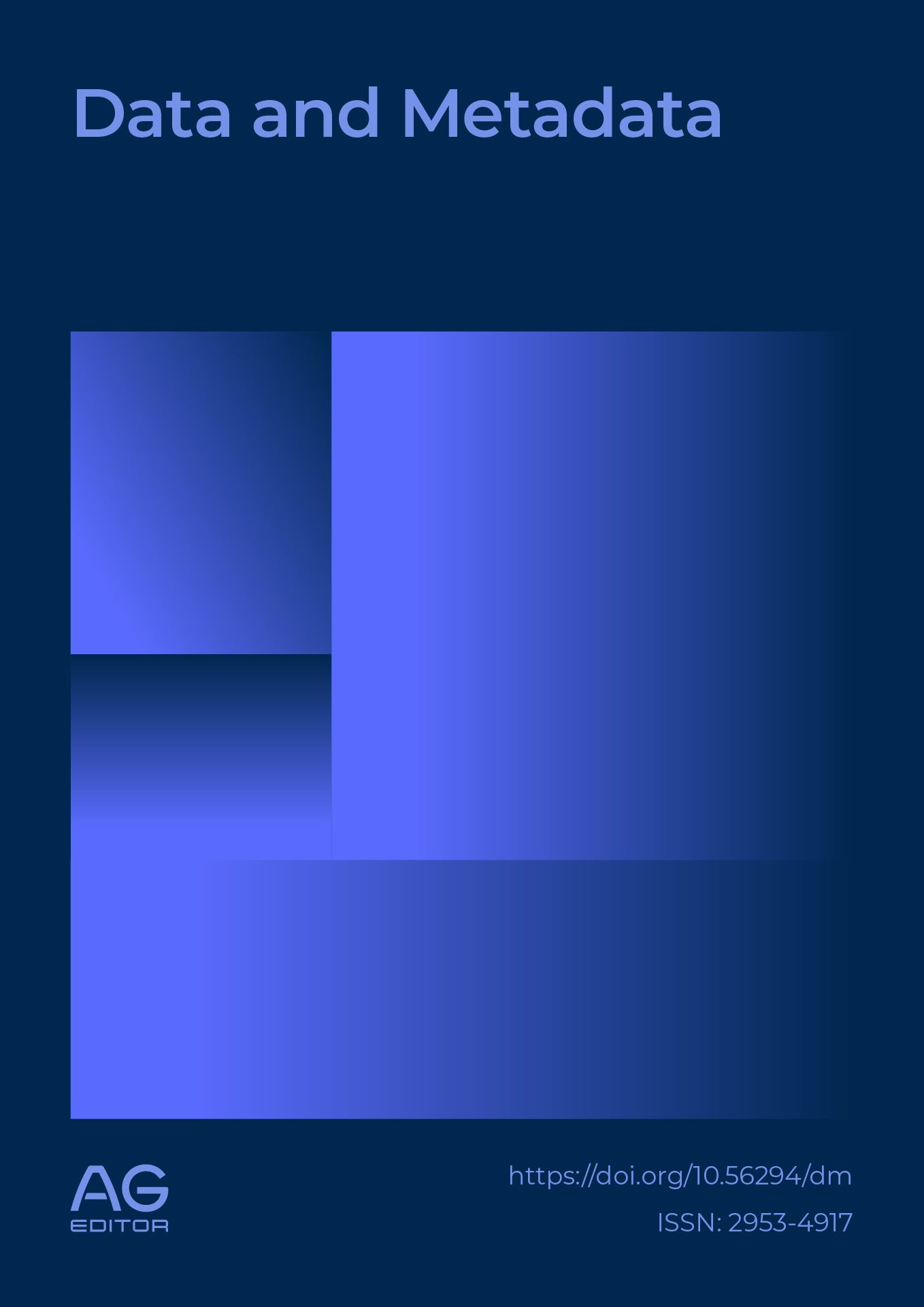Integrated Neural-Hybrid System for Efficient Tumor Detection and Object Reconstruction
DOI:
https://doi.org/10.56294/dm2025850Keywords:
3D Reconstruction, Image Preprocessing, Medical Image Processing, Segmentation, Disease DetectionAbstract
In computer vision and robotics, reconstructing multi-view 3D images is essential for accurate object representation from 2D data. In the first study, optimised weights through Adaptive School of Fish Optimisation are combined with 2D and 3D networks to introduce a Residual Network-50 model for deep learning-based 3D image reconstruction. On the ShapeNet dataset, this method demonstrates superior accuracy (0.993), F-score (0.734), and IoU (99.3%). Using Concurrent Excited DenseNet (CED)for feature extraction and Attention-Dense GRUs for prediction, the second study introduces the Concurrent Attentional Reconstruction Network(CARN) for reconstructing point clouds from single 2D images, achieving over 99% accuracy with low EMD and CD values. By combining convolutional layers, inception modules, and attention mechanisms with preprocessing steps like Ex_NLMF for noise reduction and Up_FKMA for accurate disease area identification, the third method,Twin Attention-aided Convolutional Inception Capsule Network (TA_CICNet), performs exceptionally well in medical image reconstruction and classification when it comes to diagnosing brain tumours.
References
[1] Saito, T. et al. 3D Reconstruction of Coronary Arteries from X-ray Angiography: Application to Transluminal Navigation" 2000
[2] Koo, B. K. et al. 3D Reconstruction of the Human Coronary Arteries Using Intravascular Ultrasound and Biplane Angiography” 2005
[3] Mountney, P. et al Accurate 3D Reconstruction of Internal Organs from Uncalibrated Laparoscopic Images for Augmented Reality 2009
[4] Ionasec, R. I. et al A Fully Automatic Method for 3D Reconstruction of the Left Atrium from C-arm CT. 2010
[5] Aganj, I. et al 3D Shape Reconstruction of Vascular Structures from Medical Images . 2010
[6] Maier-Hein, L. et al. 3D Reconstruction for Intraoperative Guidance in Minimally Invasive Surgery 2013
[7] Payan, A. and Montana, G. 3D Convolutional Neural Networks for Alzheimer's Disease Diagnosis 2015
[8] Çiçek, Ö. et al. 3D U-Net: Learning Dense Volumetric Segmentation from Sparse Annotation 2016 DOI: https://doi.org/10.1007/978-3-319-46723-8_49
[9] Brosch, T. et al Deep 3D Convolutional Encoder Networks with Shortcuts for Multiscale Feature Integration Applied to Multiple Sclerosis Lesion Segmentation 2016 DOI: https://doi.org/10.1109/TMI.2016.2528821
[10] Kayalibay, B. et al. Brain Tumor Classification Using 3D Convolutional Neural Network: A Preliminary Study 2017
[11] Litjens, G. et al. Deep Learning Approaches for 3D Medical Image Analysis: A Review 2017
[12]Kumar et al. Sparse Representation-Based 3D Image Reconstruction in Medical Imaging 2017.
[13] Murez, Z. et al. End-to-End Learning of Sparse Image Guided Volumes for 3D Reconstruction 2018
[14] Lee et al. Volumetric 3D Reconstruction Using Deep Learning for Medical Imaging Applications (2018).
[15] Slavcheva, Miroslava, Maximilian Baust, and Slobodan Ilic. Sobolevfusion: 3d reconstruction of scenes undergoing free non-rigid motion. In Proceedings of the IEEE conference on computer vision and pattern recognition, pp. 2646-2655. 2018. DOI: https://doi.org/10.1109/CVPR.2018.00280
[16] Zollhöfer, Michael, Patrick Stotko, Andreas Görlitz, Christian Theobalt, Matthias Nießner, Reinhard Klein, and Andreas Kolb. "State of the art on 3D reconstruction with RGB‐D cameras." In Computer graphics forum, vol. 37, no. 2, pp. 625-652. 2018. DOI: https://doi.org/10.1111/cgf.13386
[17] Zhou, Yi, Guillermo Gallego, Henri Rebecq, Laurent Kneip, Hongdong Li, and DavideScaramuzza. "Semi-dense 3D reconstruction with a stereo event camera." In Proceedings of the European conference on computer vision (ECCV), pp. 235-251. 2018 DOI: https://doi.org/10.1007/978-3-030-01246-5_15
[18] Wei, X. et al 3D Reconstruction of Curved Surfaces from Images 2019
[19] Zhang, Chenyang, Teng Huang, and Qiang Zhao. "A new model of RGB-D camera calibration based on 3D control field." Sensors 19, no. 23 (2019): 5082 DOI: https://doi.org/10.3390/s19235082
[20] Chen et al 3D Reconstruction from CT and MRI Images Using Generative Adversarial Networks" . 2019
[21] Kim, J. et al. A Survey of 3D Medical Image Reconstruction Techniques 2020
[22] Michalkiewicz, Mateusz, Sarah Parisot, Stavros Tsogkas, MahsaBaktashmotlagh, Anders Eriksson, and Eugene Belilovsky. "Few-shot single-view 3-d object reconstruction with compositional priors." In European Conference on Computer Vision, pp. 614-630. Springer, Cham, 2020. DOI: https://doi.org/10.1007/978-3-030-58595-2_37
[23] Xiang, Xiang, Zhiyuan Wang, Shanshan Lao, and Baochang Zhang. "Pruning multi-view stereo net for efficient 3D reconstruction." ISPRS Journal of Photogrammetry and Remote Sensing 168 (2020): 17-27. DOI: https://doi.org/10.1016/j.isprsjprs.2020.06.018
[24] Peng, Jiansheng, Kui Fu, Qingjin Wei, Yong Qin, and Qiwen He. "Improved multiview decomposition for single-image high-resolution 3D object reconstruction." Wireless Communications and Mobile Computing 2020 (2020). DOI: https://doi.org/10.1155/2020/8871082
[25] Zhang et al.'s "Deep Learning-Based 3D Reconstruction for Medical Imaging" 2020
[26] Xue, Yadong, Sen Zhang, Mingliang Zhou, and Hehua Zhu. "Novel SfM-DLT method for metro tunnel 3D reconstruction and Visualization." Underground Space 6, no. 2 (2021): 134-141. DOI: https://doi.org/10.1016/j.undsp.2020.01.002
[27] Yeh, Chia-Hung, and Min-Hui Lin. "Robust 3D reconstruction using HDR-based SLAM." IEEE Access 9 (2021): 16568-16581.¬¬¬¬¬¬ DOI: https://doi.org/10.1109/ACCESS.2021.3051257
[28] Shang, Jiaxiang, TianweiShen, Shiwei Li, Lei Zhou, Mingmin Zhen, Tian Fang, and Long Quan. "Self-supervised monocular 3d face reconstruction by occlusion-aware multi-view geometry consistency." In European Conference on Computer Vision, pp. 53-70. Springer, Cham, 2020. DOI: https://doi.org/10.1007/978-3-030-58555-6_4
[29] Wang, G. et al Automated 3D Reconstruction and Detection of Lung Diseases from CT Scans". 2021
[30] Hafiz, Abdul Mueed, Rouf Ul Alam Bhat, Shabir Ahmad Parah, and M. Hassaballah SE-MD: A Single-encoder multiple-decoder deep network for point cloud generation from 2D images.2021
[31] Wang et al.'s 3D Reconstruction of Medical Images Using Autoencoders 2021
[32] Patel et al.'s Multi-View 3D Reconstruction of Medical Images Using Deep Learning 2022
[33] Chen, Hui, and Yipeng Zuo 3D-ARNet: An accurate 3D point cloud reconstruction network from a single-image. 2022. DOI: https://doi.org/10.1007/s11042-021-11433-7
Downloads
Published
Issue
Section
License
Copyright (c) 2025 PremaLatha V, Dinesh Kumar Anguraj, Nikhat Parveen (Author)

This work is licensed under a Creative Commons Attribution 4.0 International License.
The article is distributed under the Creative Commons Attribution 4.0 License. Unless otherwise stated, associated published material is distributed under the same licence.




